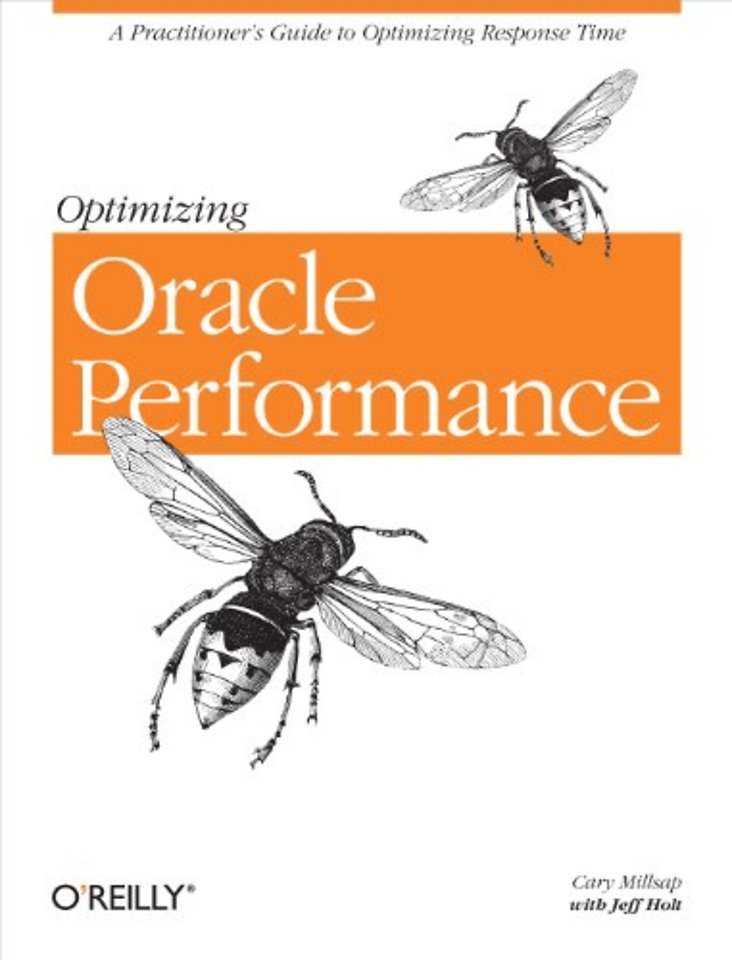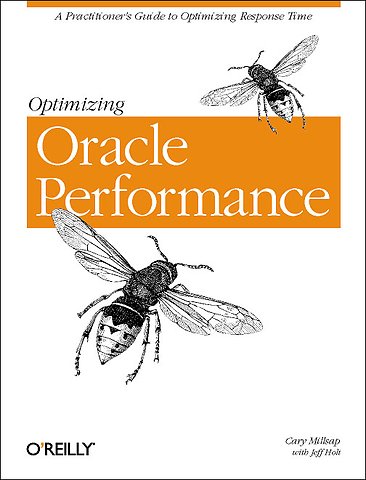Optimizing Oracle Performance
A practitioner's guide to optimizing response time
Paperback Engels 2003 9780596005276Samenvatting
Oracle system performance inefficiencies often go undetected for months or even years--even under intense scrutiny--because traditional Oracle performance analysis methods and tools are fundamentally flawed. They're unreliable and inefficient.
Oracle DBAs and developers are all too familiar with the outlay of time and resources, blown budgets, missed deadlines, and marginally effective performance fiddling that is commonplace with traditional methods of Oracle performance tuning. In this crucial book, Cary Millsap, former VP of Oracle's System Performance Group, clearly and concisely explains how to use Oracle's response time statistics to diagnose and repair performance problems. Cary also shows how 'queueing theory' can be applied to response time statistics to predict the impact of upgrades and other system changes.
'Optimizing Oracle Performance' eliminates the time-consuming, trial-and-error guesswork inherent in most conventional approaches to tuning. You can determine exactly where a system's performance problem is, and with equal importance, where it is not, in just a few minutes-even if the problem is several years old.
'Optimizing Oracle Performance' cuts a path through the complexity of current tuning methods, and streamlines an approach that focuses on optimization techniques that any DBA can use quickly and successfully to make noticeable-even dramatic-improvements.
For example, the one thing database users care most about is response time. Naturally, DBAs focus much of their time and effort towards improving response time. But it is entirely too easy to spend hundreds of hours to improve important system metrics such as hit ratios, average latencies, and wait times, only to find users are unable to perceive the difference. And an expensive hardware upgrade may not help either.
It doesn't have to be that way. Technological advances have added impact, efficiency, measurability, predictive capacity, reliability, speed, and practicality to the science of Oracle performance optimization. Optimizing Oracle Performance shows you how to slash the frustration and expense associated with unraveling the true root cause of any type of performance problem, and reliably predict future performance.
Specificaties
Lezersrecensies
Inhoudsopgave
Preface
Part I. Method
1. A Better Way to Optimize
'You're Doing It Wrong'
Requirements of a Good Method
Three Important Advances
Tools for Analyzing Response Time
Method R
2. Targeting the Right User Actions
Specification Reliability
Making a Good Specification
Specification Over-Constraint
3. Targeting the Right Diagnostic Data
Expectations About Data Collection
Data Scope
Oracle Diagnostic Data Sources
For More Information
4. Targeting the Right Improvement Activity
A New Standard of Customer Care
How to Find the Economically Optimal Performance Improvement Activity
Making Sense of Your Diagnostic Data
Forecasting Project Net Payoff
Part II. Reference
5. Interpreting Extended SQL Trace Data
Trace File Walk-Through
Extended SQL Trace Data Reference
Response Time Accounting
Evolution of the Response Time Model
Walking the Clock
Forward Attribution
Detailed Trace File Walk-Through
Exercises
6. Collecting Extended SQL Trace Data
Understanding Your Application
Activating Extended SQL Trace
Finding Your Trace File(s)
Eliminating Collection Error
Exercises
7. Oracle Kernel Timings
Operating System Process Management
Oracle Kernel Timings
How Software Measures Itself
Unaccounted-for Time
Measurement Intrusion Effect
CPU Consumption Double-Counting
Quantization Error
Time Spent Not Executing
Un-Instrumented Oracle Kernel Code
Exercises
8. Oracle Fixed View Data
Deficiencies of Fixed View Data
Fixed View Reference
Useful Fixed View Queries
The Oracle "Wait Interface"
Exercises
9. Queueing Theory for the Oracle Practitioner
Performance Models
Queueing
Queueing Theory
The M/M/m Queueing Model
Perspective
Exercises
Part III. Deployment
10. Working the Resource Profile
How to Work a Resource Profile
How to Forecast Improvement
How to Tell When Your Work Is Done
11. Responding to the Diagnosis
Beyond the Resource Profile
Response Time Components
Eliminating Wasteful Work
Attributes of a Scalable Application
12. Case Studies
Case 1: Misled by System-Wide Data
Case 2: Large CPU Service Duration
Case 3: Large SQL*Net Event Duration
Case 4: Large Read Event Duration
Conclusion
Part IV. Appendixes
A. Glossary
B. Greek Alphabet
C. Optimizing Your Database Buffer Cache Hit Ratio
D. M/M/m Queueing Theory Formulas
E. References
Index
Anderen die dit boek kochten, kochten ook
Rubrieken
- advisering
- algemeen management
- coaching en trainen
- communicatie en media
- economie
- financieel management
- inkoop en logistiek
- internet en social media
- it-management / ict
- juridisch
- leiderschap
- marketing
- mens en maatschappij
- non-profit
- ondernemen
- organisatiekunde
- personal finance
- personeelsmanagement
- persoonlijke effectiviteit
- projectmanagement
- psychologie
- reclame en verkoop
- strategisch management
- verandermanagement
- werk en loopbaan







